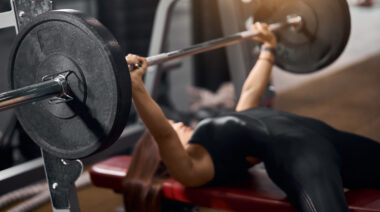Imagine the entire state of Washington lining up at the doctor’s office. That’s about how many people visited the doctor because of shoulder injuries in 2006. That year saw 7.5 million total shoulder-related doctor visits in the United States alone.
Prevention Is Key
Over 4.1 million of those shoulder injuries were due to rotator cuff problems. In his excellent article, Avoid Shoulder Injury by Strengthening the Rotator Cuff, Dr. Levi Harrison discussed the importance of rotator cuff health, particularly for athletes. To prevent injuries, Dr. Levi recommended doing the following exercises three times a week for three sets of ten to fifteen reps.
It’s depressing to think how many of those 7.5 million injuries could have been prevented by simple exercises like these. It’s even more depressing to consider that with those kind of statistics, many of you reading this article could have a shoulder injury on the near horizon.
But it’s not all doom and gloom. There are things you can do to stop these injuries in their tracks and prevent problems before they start. And aside from fear of injury, there are a lot of other good reasons to give your shoulders some love. Here are three:
1. Because You Sit a Lot
If you live in modern society, your shoulders are suffering from your typing habits. In her article, The Thing You Do Every Day That’s Setting You Up for Shoulder Injuries, author and mobility expert Brooke Thomas explained the domino effect sitting and typing has on your shoulders:
A shortened pec minor, the little guy who sits deep to its better known neighbor pec major, will rotate your scapula forward and down, giving you that slumped shoulder look that you like so much. If you add to that taking the humerus (upper arm bone) into internal rotation while you type, then over time the humerus starts to live more comfortably at the front lip of the glenohumeral joint.
Once it is subtly displaced this way, it closes down the subacromial space even more, which means the supraspinatus and biceps tendons have less room to breathe and can wind up getting pinched every time you lift your arm. This sensation is what is commonly called a shoulder impingement. Do it enough and it’s like dropping a cinder block on a garden hose – it’s not subtle anymore.
Brooke made the following video to help me and my fellow desk warriors keep our shoulders happy. Add this stretch to your daily routine to combat impingement and improve shoulder health.
2. Because Your Overhead Lifts Could Be Better
Shoulder mobility plays a big role in overhead lift performance. In his article, The Dynamic Duo of Shoulder Impingement, coach and physical therapy expert Robert Camacho discussed the role your shoulders play in overhead movements, as well as the lesser known role of the trapezius muscles and serratus anterior muscles.
Robert also explained why learning to stabilize your shoulders is related to core stability, a central component of overhead work:
You have to learn to stabilize your shoulders properly. If I asked you to stabilize your shoulders, what would you do? I tend to find that this is a commonly overlooked aspect of training. Knowing how to brace your shoulders is every bit as important as knowing how to brace your core. You can’t have a stable structure on a weak foundation.
… stabilizing your shoulders is just about squeezing the muscles of your mid back (mid and lower traps and rhomboids) and using them to maintain the position of your scapulae. Remember, core integrity is the first step. If you can’t properly brace your core, it’s almost impossible to brace your shoulders.
So by working on your shoulders, your body will be in a better position to put weight overhead. What athlete wouldn’t want that?
3. Because You Have Other Body Parts
The shoulders are connected to everything else in your body. When you release tension in your shoulders, suddenly you’ll be able to squat deeper or notice your neck feels a sense of relief. Try this simple sequence of three stretches by Sima Tamaddon to see what I mean.
I love this series of stretches because it pairs shoulder and hip openers. But even if you’re not stretching both of these trouble spots at the same time, you’ll find opening and mobilizing your shoulders will do the same for other areas of your body.
It’s kind of like that saying, “If Mama ain’t happy, ain’t nobody happy.” If your shoulders are stiff and shortened, other parts of your body suffer. Give these tips a try and let us know how it goes!
Related Reading:
- Mental and Physical Rehab for Injured Shoulders
- Put Your Shoulders in Place: Progressive Posture Alignment, Part 3
- How to Self-Diagnose Your Shoulder Pain
- What’s New On Pulse Beat Fit Today
Photo 1 courtesy of Shutterstock.






